Explore why the belief in white biblical figures is a myth, revealing a more diverse historical truth that challenges modern perceptions.
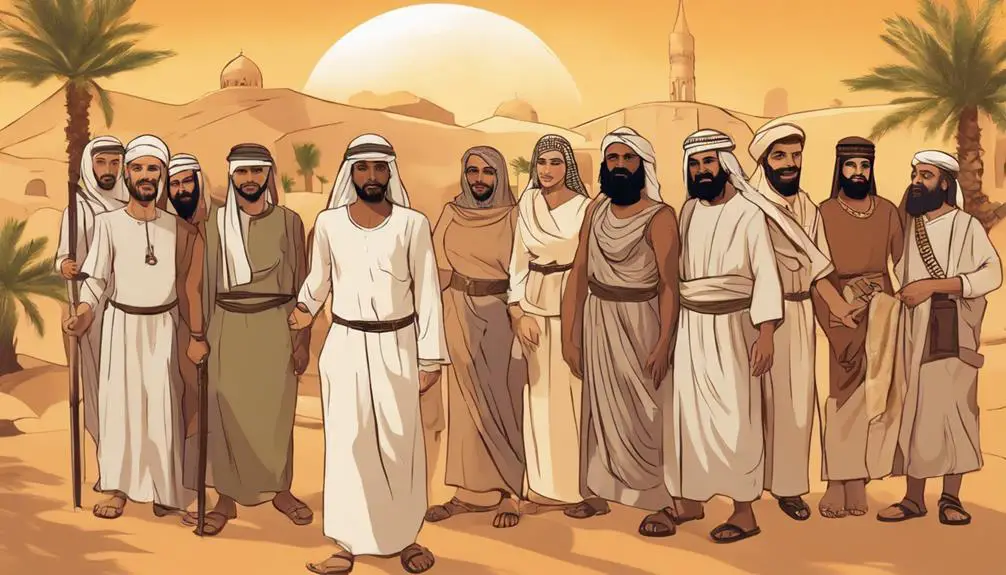
There Are No White People in the Bible
Navigating the tapestry of biblical history is akin to traversing a vast desert, where the sands of time have obscured the true colors of its inhabitants.
You've likely encountered the widespread notion that biblical figures resemble contemporary Western individuals, a belief that's more a mirage than reality. This discussion invites you to strip away layers of misconception and consider the historical and geographical context that suggests there were no white people in the Bible.
As you explore this terrain, you'll uncover how these misconceptions have shaped Western iconography and why revisiting the appearances of biblical characters matters for a deeper understanding of universal messages.
Key Takeaways
- Modern racial categories cannot accurately describe the diverse ethnic landscape of the ancient Near East.
- Eurocentric depictions of biblical figures often misrepresent the region's true cultural and phenotypic diversity.
- Biblical narratives focus on universal themes that transcend race, emphasizing moral and ethical teachings.
- Re-examining the portrayal of biblical characters with historical accuracy can challenge and correct longstanding misconceptions.
Historical and Geographical Context
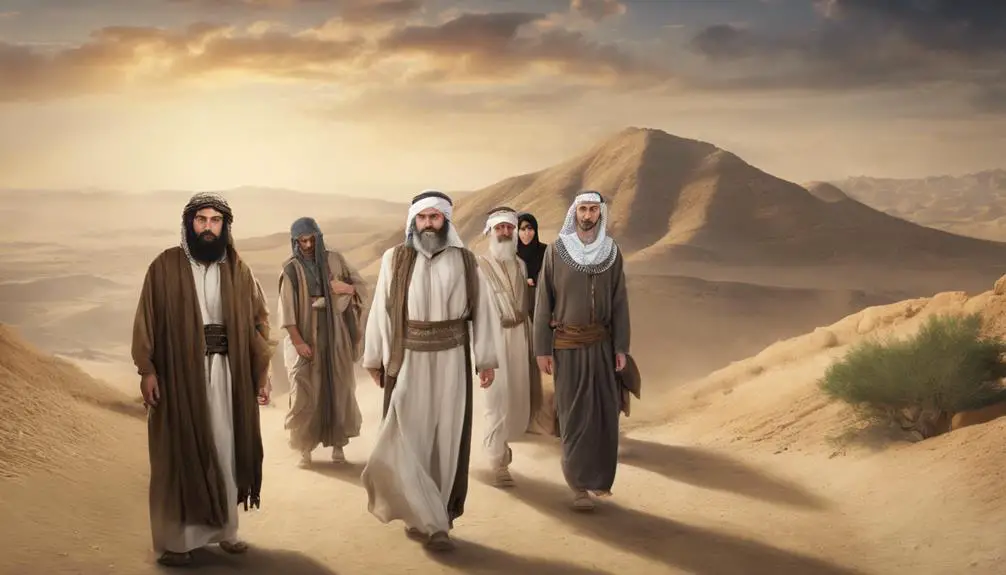
To accurately assess the claim of no white people in the Bible, it's essential to delve into the historical and geographical context of the regions and peoples it describes. The Bible unfolds across a vast expanse of time and space, primarily within what's now known as the Middle East. This area served as a crossroads for ancient migrations, where diverse groups interacted due to trade, conquest, and displacement.
The concept of race, as understood today, didn't hold the same meaning in ancient times. Cultural interpretations of identity were more fluid, often based on tribal, linguistic, or regional affiliations rather than skin color. The peoples of the Bible were primarily Semitic, descending from regions that today encompass parts of Africa, the Arabian Peninsula, and the Near East. These areas were home to a mosaic of cultures and appearances, influenced by millennia of migrations and exchanges.
Ancient migrations played a crucial role in shaping the demographics of the Biblical world. Nomads, traders, and conquerors traversed the deserts and seas, blending the genetic and cultural landscapes of the regions they passed through or settled in. These movements contributed to a diverse range of phenotypes, including those that might be classified today as white, but such classifications are modern constructs not applicable to ancient contexts.
Understanding the historical and geographical context requires acknowledging the complexity of ancient identities. Cultural interpretations of the time were based on a multitude of factors, with physical appearance being just one of many. The Bible's narratives, set against this backdrop, reflect a world far removed from contemporary notions of race, emphasizing the importance of contextual analysis in interpreting ancient texts.
Misconceptions of Biblical Ethnicity
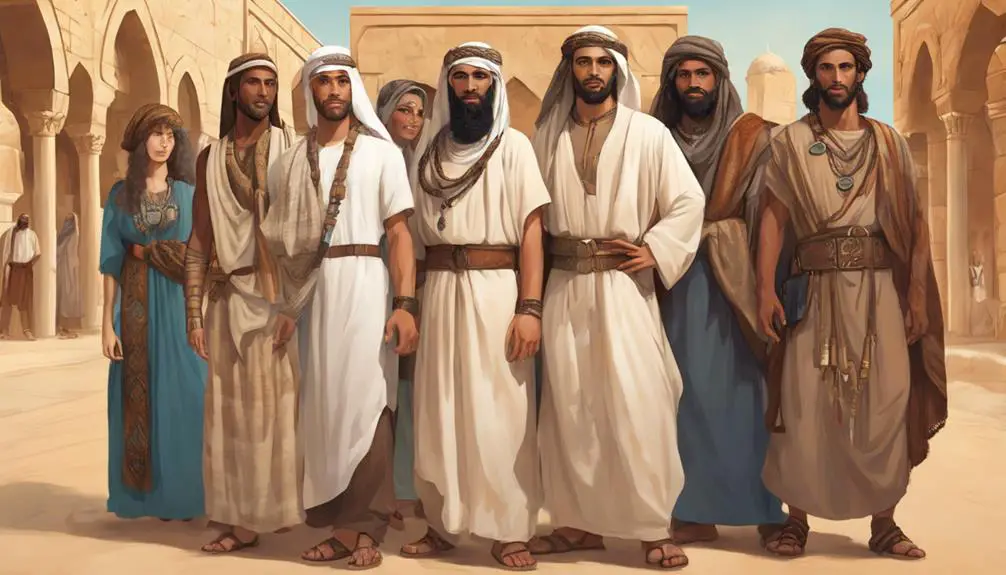
Misconceptions about biblical ethnicity often stem from anachronistically applying modern racial categories to ancient peoples. This simplistic approach overlooks the complex tapestry of ethnic diversity that characterized the ancient Near East and the broader Mediterranean world. The Bible, a collection of texts from various periods and regions, reflects this diversity in its narratives, yet modern interpretations frequently fail to acknowledge it accurately.
To deepen your understanding, consider the following points:
- Ethnic Diversity in Antiquity: The ancient world was a melting pot of cultures and peoples. The regions mentioned in the Bible were crossroads of civilizations, including Egyptians, Assyrians, Babylonians, Persians, Greeks, and Romans, each contributing to a rich mosaic of cultural representation.
- Misreading Cultural Markers: Modern readers often misinterpret biblical references to physical appearance, projecting contemporary notions of race onto descriptions that weren't about race in their original context.
- Translations and Interpretations: The way biblical texts have been translated and interpreted over centuries can obscure the original ethnic contexts. Language and cultural biases have led to a homogenization of biblical characters into a narrow racial framework.
- Archaeological and Historical Evidence: A wealth of archaeological findings and historical records supports the notion of a racially and ethnically diverse ancient Near East. These sources provide a more accurate picture of the peoples described in biblical narratives.
Understanding biblical ethnicity requires a careful consideration of historical, cultural, and archaeological evidence, moving beyond modern constructs to appreciate the true ethnic diversity of the ancient world. This approach fosters a more nuanced and accurate cultural representation in biblical interpretation.
Impact on Western Iconography
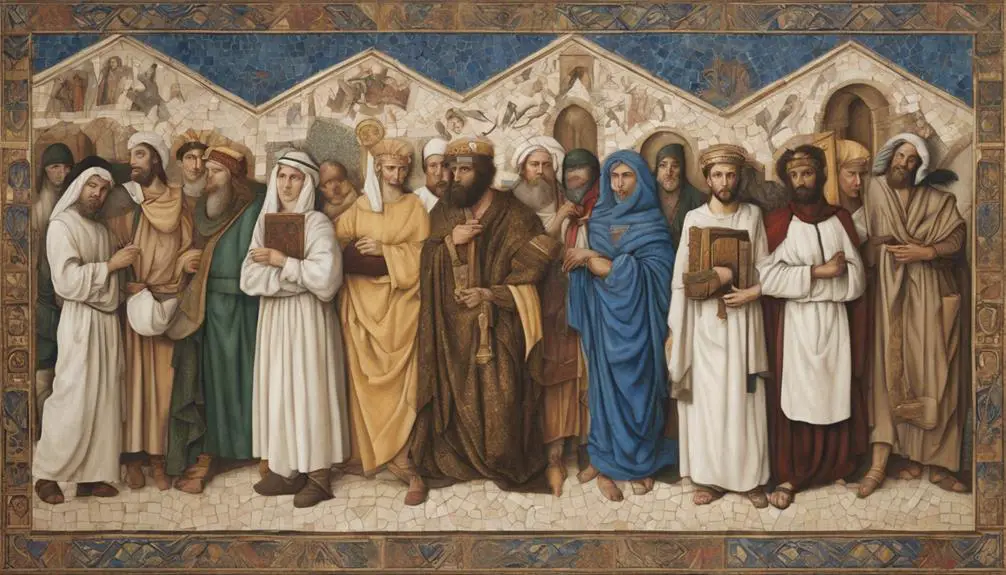
Building on the understanding of biblical ethnicity's complexity, it's crucial to examine how these diverse origins have been visually represented, or often misrepresented, in Western iconography. The depiction of biblical figures in art and media through a predominantly Eurocentric lens hasn't only skewed historical accuracy but also propagated a form of cultural appropriation. This reimagining of characters with Western features and skin tones diverges significantly from their Middle Eastern roots, influencing perceptions and understanding of these historical figures.
Artistic interpretations play a pivotal role in shaping public consciousness. When you see Renaissance paintings, stained glass windows in churches, or modern media portrayals of biblical stories, the characters often reflect the artists' cultural backgrounds rather than historical or geographical accuracy. This trend, deeply rooted in the dynamics of power and cultural dominance, has effectively rewritten visual history to align with Western narratives.
This cultural appropriation extends beyond mere artistic license; it reinforces and perpetuates Eurocentric views of beauty, morality, and divinity, implicitly suggesting that these virtues are inherently tied to whiteness. It also erases the rich cultural and ethnic diversity that defines the biblical world, denying the complexity and humanity of its people.
You must recognize the impact of these portrayals on collective memory and identity. They not only distort historical truths but also contribute to a broader cultural narrative that marginalizes non-Western cultures and identities. Acknowledging and critically examining these artistic interpretations is essential for a more inclusive understanding of biblical history and its relevance to diverse cultures today.
Revisiting Biblical Characters' Appearances
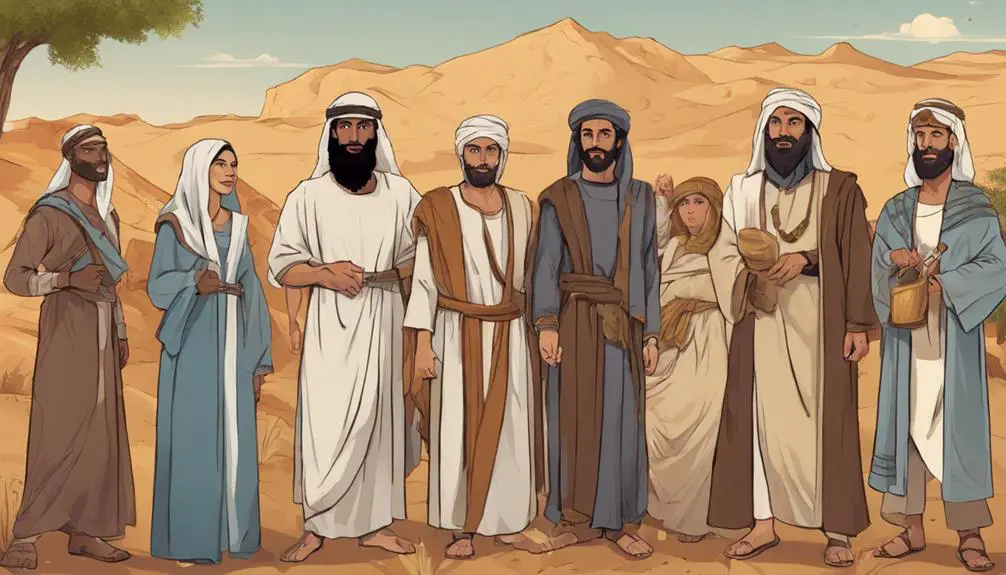
While revisiting the appearances of biblical characters, it becomes evident that historical and archaeological evidence challenges the Eurocentric depictions commonly seen in Western art and media. The traditional images of these figures, often rendered with light skin, blue eyes, and flowing, light-colored hair, are starkly contrasted by the likely realities of their Middle Eastern origins. This discrepancy invites a deeper exploration of cultural interpretations and artistic representations in biblical narratives.
To understand the significance of reevaluating these appearances, consider the following points:
- Geographical Context: The Bible unfolds in a region where people predominantly had darker skin tones, reflecting a Middle Eastern and North African heritage. This fact alone suggests that the Eurocentric portrayals are inaccurate.
- Historical Clothing and Hairstyles: Artistic representations often neglect the historical accuracy of attire and hairstyles, which would have been vastly different from those depicted in Renaissance art, for instance.
- Cultural Interpretations: The adaptation of biblical characters' images to fit the cultural and racial norms of the society interpreting the Bible has led to a wide variance in depictions. This malleability highlights the influence of cultural context on religious imagery.
- Archaeological Evidence: Discoveries from ancient sites, including artifacts and frescoes, offer more accurate representations of the people from biblical times, further challenging the traditional artistic interpretations.
In analyzing these points, it's clear that much of what's accepted as the 'look' of biblical characters is more a reflection of cultural bias and artistic license than historical or archaeological accuracy. This realization prompts a reexamination of how these figures are depicted and understood, moving beyond superficial appearances to grasp the deeper essence of their stories and teachings.
Beyond Skin Color: Universal Messages

Having considered the historical and cultural inaccuracies in the depiction of biblical characters, it's crucial to explore the universal messages embedded within these narratives that transcend skin color. The emphasis on racial identity has often overshadowed the core teachings and principles meant to guide moral and ethical conduct across diverse cultures. These stories, when stripped of their culturally biased interpretations, offer profound insights into human nature, societal norms, and the divine that are applicable to all, irrespective of racial or ethnic backgrounds.
The universal themes of love, justice, forgiveness, and redemption are central to these texts and resonate deeply within the human experience. They encourage a reflection on one's own actions and their impact on others, promoting a sense of empathy and compassion that crosses racial and cultural divides. This perspective invites a reevaluation of the role that cultural interpretations play in shaping our understanding of these ancient narratives. It suggests that focusing solely on the racial identity of biblical characters limits the capacity of these texts to speak to the shared aspects of the human condition.
Thus, engaging with the Bible through the lens of universalism rather than racial or ethnic specificity allows for a more inclusive interpretation that emphasizes the commonalities among people. This approach not only enriches personal spiritual and moral growth but also fosters a greater sense of unity and understanding across diverse communities. It highlights the importance of looking beyond superficial differences to the underlying moral and ethical teachings that can inspire and guide humanity as a whole.
Frequently Asked Questions
How Have Modern DNA Analysis and Genetic Studies Contributed to Our Understanding of the Ethnic Backgrounds of Biblical Figures?
Modern DNA analysis and genetic studies have revolutionized our understanding of the ethnic backgrounds of biblical figures. Through techniques like genetic mapping, researchers have traced the lineage of these ancient individuals, offering insights into their origins and connections.
Moreover, studies on ancestral diets, informed by genetic data, have provided additional layers of context about their lifestyles. This scientific approach has added depth to our knowledge, challenging traditional perceptions and enriching historical narratives.
What Role Has Language and Translation Played in Shaping Our Perceptions of Race and Ethnicity in the Bible?
Language and translation are like lenses that color our view of the world, shaping perceptions of race and ethnicity in the Bible. When translators navigate the treacherous waters of ancient texts, translation accuracy and cultural bias often intertwine, subtly shifting the ethnic landscape of biblical figures.
This process, while aiming for faithfulness, can inadvertently infuse contemporary racial understandings into ancient narratives, thus molding our modern interpretation of biblical ethnicity through a culturally tinted prism.
How Do Contemporary Religious Leaders From Various Denominations Interpret and Teach About the Concept of Race and Ethnicity in Biblical Texts?
You're exploring how modern religious leaders interpret race and ethnicity in the Bible, considering their teachings' impact.
They often weave these themes into discussions on religious fashion and ritual diets, highlighting cultural diversity and inclusivity.
These leaders analyze texts, challenging traditional views and promoting a broader understanding of biblical figures' ethnic backgrounds.
This analytical approach fosters a more inclusive religious dialogue, emphasizing the global nature of biblical teachings.
Can You Provide Examples of How the Portrayal of Biblical Characters in Media and Literature Has Evolved Over the Last Century With Regard to Racial Identity?
As you navigate the shifting sands of time, you'll notice that the artistic representation of biblical characters in media and literature has significantly evolved.
Initially, these portrayals leaned heavily towards a Eurocentric view, often sidelining historical accuracy. However, the last century has witnessed a gradual shift towards more diverse and accurate depictions, reflecting the true ethnic backgrounds of these figures.
This change underscores a growing acknowledgment of the rich tapestry of humanity depicted in sacred texts.
How Do Current Geopolitical Tensions in the Middle East Influence Interpretations and Discussions About the Racial and Ethnic Identities of Biblical Characters Today?
You're seeing how current geopolitical tensions, especially those driven by oil politics and cultural tourism, shape today's interpretations and discussions about the racial and ethnic identities of biblical characters.
These tensions influence public and scholarly perceptions, leading to diverse and sometimes conflicting views.
As these debates unfold, they highlight the complex interplay between historical interpretations and contemporary geopolitical dynamics, ultimately affecting how these biblical figures are understood and represented in media and literature.
Conclusion
In conclusion, you've journeyed through the historical and geographical landscapes that shaped the Bible, unraveling the misconceptions of ethnicity within its pages.
This exploration hasn't only altered the Western iconographic perceptions but also invited a reevaluation of biblical characters' appearances.
Beyond the shades of skin, the Bible's narratives offer universal messages, echoing the adage that it's not our differences that define us but our shared human experiences.
Thus, in understanding, we find unity, transcending beyond mere appearances.



Sign up